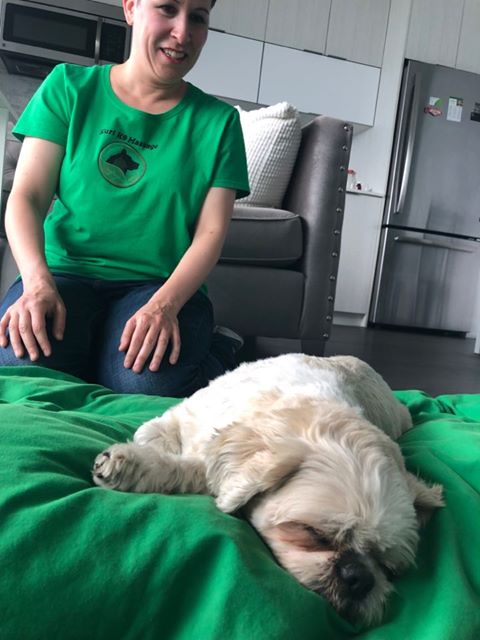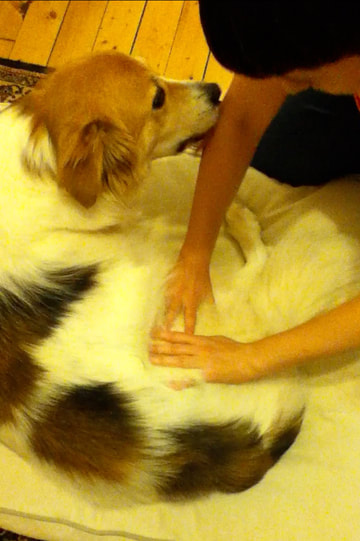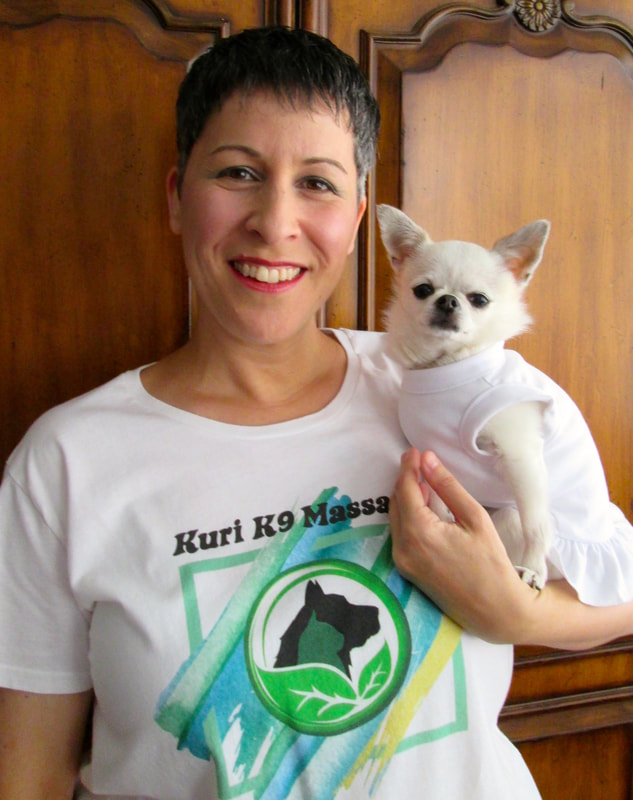|
Once the actual first massage is over, we can discuss my findings (though I can often also discuss this as I go through the first session, as I find issues). We then discuss options moving forward. Obviously recommendations are made on a case by case basis and depend on my findings and your principle concerns, but generally speaking there are two major options should you choose to go forward with my services. To see the best initial results, it’s usually better to cluster three or so appointments fairly close together (no more than a week apart for each appointment). After that, we can go appointment by appointment on a kind of maintenance schedule (which can occur weekly, every 2 weeks, 3 weeks or 4 weeks, depending on your pet’s particular issues), OR we can continue clustering appointments close together (and you can continue to book in packages of 3 or more, saving 20%) with a break of a few weeks in between. During and directly after the session, I will also show you how to do some of the strokes — usually effleurage, raking and tapotement — which will become part of your home care plan. I will also follow up with specific home care instructions, tailored to your pet’s needs, via a PDF sheet emailed to you after the appointment (usually the same night or the following day). A word about cats and dogs under two years of age: most Moms and Dads of pets this young don’t think massage is necessary at this point. On one hand, yes, the puppy or kitten will definitely be less cooperative and less likely to settle and relax for a full session, but I would also say that there are two very good reasons to start massage therapy with younger animals. The first reason is that massage therapy will help even the healthiest of pets — the circulation support it provides essentially gives all systems a boost, not only helping the heart do its work and cells exchange nutrients, oxygen and waste, it also keeps joints well lubricated, which means ROM is improved, which in turn means your pet gets the most out of their physical and mental fitness. This results in improved muscle tone and strength, which allows them to continue performing optimally, and in this way, can help prevent injury because their ROM and muscle tone is at peak performance. The second reason is that exposing your young pet to massage more often and early on allows them to gain confidence, makes them feel secure with human touch and handling (which comes in handy when someone is pet-sitting for you, walking your dog or at the vet clinic, as well as in any social situation). This also means they’re used to massage, so as they age and are ever more likely to really need massage therapy to support their health in future, this is not something new and strange to them. Thank you for reading my posts on What’s Involved in Canine and Feline Massage Therapy. Look for my next Canine and Feline Massage Therapy FAQ post in February! Would you like to know the general Whys of Canine and Feline Massage Therapy right now? Read my “Why Pet Massage” page on my website right now… WHY NOT BOOK YOUR PET’S FIRST MASSAGE SESSION? MASSAGE HELPS ANIMALS ALL ACROSS THE HEALTH AND AGE SPECTRUM! AND KEEP IN MIND, IF YOU BOOK 4 (OR MORE) APPOINTMENTS AS A PACKAGE, YOU WILL RECEIVE A 20% DISCOUNT!
See my Services, Fees and How it Works page for more info. Click HERE for Monday’s first post Click HERE for Tuesday’s second post Click HERE for Wednesday’s third post Click HERE for Thursday’s fourth post
0 Comments
Leave a Reply. |
AuthorRegan is a certified Canine Massage Therapist (CCMT), has certification in First Aid and CPR for Pets, and some beginner training in Herbal Remedies and Aromatherapy for personal use. Archives
July 2024
Categories |





 RSS Feed
RSS Feed